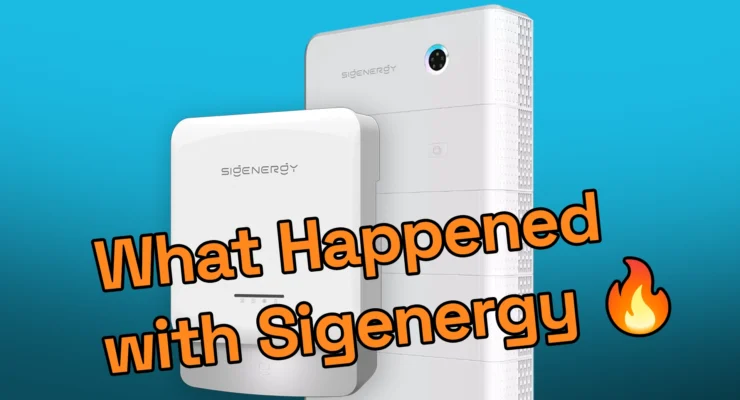Fast read
For Australians in areas with frequent blackouts, a solar battery's value goes far beyond a simple payback calculation. While the upcoming federal Cheaper Batteries Program will shorten financial return times, the real benefit in unreliable grid areas is energy security. With the rebate, payback periods could fall to between 6 and 9 years, but the ability to keep lights, refrigerators, and home offices running during an outage provides a crucial, often unquantified, value that standard payback models don't capture.
What’s the payback time for batteries in areas with frequent blackouts?
For years, the question of whether a home battery is “worth it” in Australia has been a complex one, often boiling down to a simple financial calculation: will it save me enough on my power bills to justify the cost?
However, for a growing number of Australians living in areas prone to grid instability, the conversation is changing. From regional towns at the mercy of storm-damaged power lines to outer suburbs facing strain on ageing infrastructure, the value of keeping the lights on is becoming a powerful motivator. If you’re tired of unplanned blackouts, a battery’s worth is measured in more than just dollars and cents.
This article will guide you through understanding the payback for a battery, not just financially, but also by factoring in the immense value of energy security.
How is traditional battery payback calculated?
In simple terms, the payback period is the time it takes for the savings generated by your battery to equal its upfront cost. After this point, every dollar saved is a direct financial return.
Several key factors influence this calculation:
- Upfront Cost: This includes the battery itself, a compatible hybrid inverter (if you don’t already have one), and installation. As of mid-2025, a quality 10kWh battery system typically costs between $11,000 and $14,000 before rebates, depending on the brand and installation complexity.
- Government Incentives: The single biggest factor changing the financial equation is the federal government’s Cheaper Home Batteries Program. Starting July 1, 2025, it provides a rebate delivered through Small-scale Technology Certificates (STCs). In 2025, this can be worth up to $372 per kWh, though after administrative costs, most households can expect a point-of-sale discount of around $330-$350 per kWh. For a typical 10kWh battery, this slashes approximately $3,300 to $3,700 off the upfront cost.
- Electricity Tariffs: The higher your electricity rates, the more you save with a battery. This is especially true if you’re on a “time-of-use” tariff, where you can use stored solar energy to avoid expensive evening peak rates.
- Feed-in Tariffs (FiTs): As FiTs for exporting excess solar to the grid have fallen, the incentive to store your own energy for later use has grown stronger.
With the new federal rebate, payback periods for a well-sized battery could fall to between 6 and 9 years for many households, a significant improvement from the 10-15 years often seen previously.
The blackout factor: placing a value on energy security
Standard payback calculators can’t put a price on the frustration and disruption of a power outage. For many, this is the most compelling reason to invest in a battery. With an appropriately configured system, you gain backup power that can seamlessly take over when the grid fails.
Consider the real-world costs of a blackout that a battery helps you avoid:
- Spoiled Food: A prolonged outage can easily lead to hundreds of dollars in spoiled food from a defunct fridge and freezer.
- Lost Productivity: For anyone working or running a business from home, a blackout means lost income and productivity. The internet, computers, and essential office equipment go dark.
- Safety and Comfort: During a summer heatwave or a winter storm, a blackout means no air conditioning or heating. It can also disable security systems and garage doors, compromising your family’s safety and convenience.
- Medical Needs: For those relying on powered medical equipment, an uninterrupted power supply is not just a convenience—it’s a necessity.
While the grid in most of Australia is generally reliable, outages caused by extreme weather like storms, floods, and bushfires are becoming more common and severe. States like Queensland, NSW, and Victoria have all experienced significant weather-related blackouts affecting hundreds of thousands of homes in recent years.
How does a battery provide backup power?
When the grid goes down, a solar system without a battery must also shut down for safety reasons. A battery system with backup capability, however, can safely disconnect from the grid and create its own stable, independent power source for your home.
This is where the choice of technology becomes important. Modern all-in-one systems are designed for this exact scenario. For example, the Sigenergy SigenStor is an integrated system that can provide an ultra-fast switchover to backup power. While the manufacturer sometimes quotes a 0ms time, independent reviews and technical documents note a switchover time of around 5 milliseconds to enter backup mode, which is still virtually instantaneous for most household electronics.
Similarly, Sungrow’s hybrid inverters and SBR series batteries are well-regarded for their robust “black start” backup capability, allowing your home to keep running on stored solar power and even continue charging the battery from your panels during a grid outage.
Questions to ask your installer about blackout protection
Not all battery installations are created equal when it comes to backup. To ensure you get the protection you need, discuss these key points with your accredited installer. As of early 2024, installer accreditation transitioned from the Clean Energy Council (CEC) to a new body, Solar Accreditation Australia (SAA). Ensure your chosen installer holds a current SAA accreditation to be eligible for rebates.
- Which circuits will be backed up? It’s common to back up only “essential loads” like the kitchen, lights, and a power circuit for the fridge and internet router. Backing up the entire house is possible but requires a larger and more expensive system.
- What is the switchover time? How quickly does the system kick in? For sensitive electronics, a seamless or near-instantaneous switchover is crucial. Systems like Sigenergy offer a switchover measured in milliseconds, while others might take a few seconds.
- Can the battery recharge from solar during a blackout? This is a critical feature. Without it, your battery will only last until its stored energy is depleted. Quality systems from brands like Sungrow are designed to do this, extending your energy independence for as long as the sun is shining.
- What is the system’s power output in backup mode? Ensure the backup output can handle the combined load of your essential appliances.
So, what is the real payback?
For those in blackout-prone regions, the return on investment for a battery is twofold. Financially, the upcoming federal rebate makes the numbers more attractive than ever, with payback periods shortening dramatically.
However, the true value lies in the peace of mind and continuity that a battery provides. It’s an investment in keeping your family safe, your home office running, and your life uninterrupted. When you combine the tangible bill savings with the invaluable benefit of energy security, a home battery transforms from a household luxury into an essential piece of infrastructure for modern Australian life.
If you are considering a move towards energy independence, the first step is to get tailored advice based on your specific location, energy usage, and home setup. Speaking with an SAA-accredited local expert can help you understand the full financial and practical benefits a battery system can offer you.





